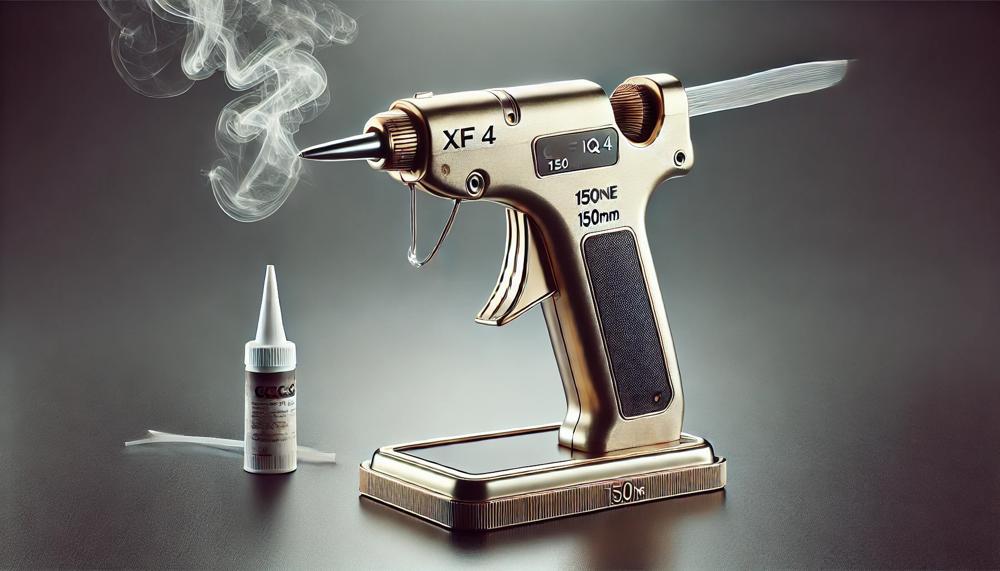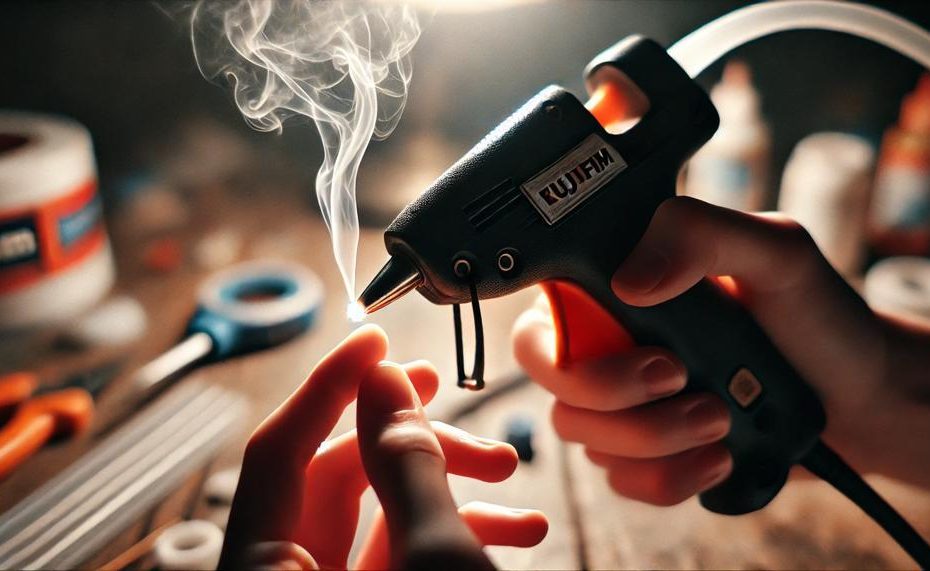Yes, the fumes from a hot glue gun can be harmful. While using a hot glue gun is common for various DIY projects, it’s important to be aware of the potential health risks associated with its fumes. The primary component in hot glue, ethylene-vinyl acetate (EVA), releases volatile organic compounds (VOCs) when heated.
Additionally, other chemicals such as formaldehyde, toluene, and acetone may also be present in the fumes. Prolonged exposure to these substances can lead to respiratory and skin irritation, and may pose serious health risks, particularly for individuals with pre-existing conditions.
To ensure safety, it’s crucial to use a hot glue gun in a well-ventilated area and consider wearing protective equipment. Understanding the specific formulation of your glue and following the manufacturer’s safety guidelines can help minimize potential hazards. If you experience any adverse health effects after using a hot glue gun, seek medical attention promptly.
Table of Contents
Key Takeaways:
- Health Risks: Fumes can cause respiratory and skin irritation, with serious health risks from prolonged exposure.
- Chemicals Involved: EVA, VOCs, formaldehyde, toluene, and acetone.
- Safety Measures: Ensure proper ventilation, use protective gear, and handle the glue gun with care.
- Brand Variations: Different brands may have different formulations; always follow manufacturer instructions.
- Immediate Action: Seek medical help if adverse effects occur.
The Basics of Hot Glue
The main ingredients in hot glue that can potentially produce toxic fumes are synthetic polymers like ethylene-vinyl acetate (EVA) and polyurethane.
When heated, these materials release fumes containing volatile organic compounds (VOCs) such as formaldehyde, toluene, and acetone. These substances can cause various health issues, particularly respiratory irritation.
Toxic Ingredients in Hot Glue and Their Effects
| Ingredient | Possible Toxic Fumes | Health Effects |
| Ethylene-Vinyl Acetate (EVA) | Volatile Organic Compounds (VOCs) | Respiratory irritation, skin irritation |
| Polyurethane | VOCs, isocyanates | Respiratory issues, skin and eye irritation |
| Formaldehyde | Formaldehyde gas | Respiratory issues, carcinogenic |
| Toluene | Toluene vapors | Dizziness, headaches, neurological damage |
| Acetone | Acetone vapors | Eye and respiratory irritation, headaches |
Proper ventilation is crucial to reduce exposure to these fumes. Ensure to work in a well-ventilated area and consider using protective gear, such as masks and gloves.
Different brands might have varying compositions, so always follow the safety guidelines provided by the manufacturer. If adverse health effects are experienced, seek medical attention immediately.
Is Hot Glue Flammable?
Yes, hot glue fumes can be flammable. Like most organic fumes, the vapours released by hot glue, especially when heated to high temperatures, can ignite under certain conditions. This flammability risk is heightened in poorly ventilated areas or when the fumes are concentrated.
Key Considerations
| Substance | Common Fumes Released | Flammability Risk |
| EVA (Ethylene-vinyl acetate) | Formaldehyde, Toluene | High |
| Polyurethane | Acetone, Toluene | Moderate |
| General Organic Compounds | Various hydrocarbons | Varies, typically high |
Safety Tips
- Ventilation: Always use hot glue in a well-ventilated area to disperse fumes and reduce the risk of ignition.
- Protective Gear: Wear masks and goggles to protect against inhalation and eye irritation.
- Temperature Control: Avoid overheating the glue, as higher temperatures increase fume production and flammability.
- Storage: Keep hot glue sticks away from open flames and heat sources to prevent accidental ignition.
Hot Glue’s Combustible Nature
The combustible nature of hot glue significantly affects the toxicity of its fumes. When hot glue reaches high temperatures, especially above 450°F (232°C), it can emit toxic fumes containing harmful organic compounds such as formaldehyde and toluene. These compounds are not only irritating but also potentially hazardous to health.

The impact on toxicity can be summarised as follows:
| Temperature | Fume Composition | Health Impact |
| Below 450°F (232°C) | Minimal emission of fumes; mostly non-toxic | Low risk of irritation or health issues |
| Above 450°F (232°C) | Increased emission of formaldehyde, toluene, and other organic compounds | Higher risk of respiratory irritation, headaches, dizziness, and long-term health effects |
| Exposure to Open Flame | Potential release of combustible fumes | Risk of fire and inhalation of highly toxic gases |
To mitigate these risks, it’s crucial to use hot glue in a well-ventilated area, avoid overheating, and ensure no open flames are nearby. Wearing protective gear such as masks and goggles can further reduce exposure to toxic fumes.
Safety Measures and Best Practices
To minimise exposure to potentially toxic fumes when using a hot glue gun, follow these safety measures and best practices:
- Wear Protective Gear: Always wear gloves and eye protection to safeguard against burns and splashes.
- Ventilation: Ensure your workspace is well-ventilated. Use fans or open windows to disperse fumes.
- Manufacturer’s Instructions: Carefully follow the manufacturer’s instructions for safe and proper use.
- Low-Temperature Glue Guns: Opt for a low-temperature glue gun to reduce the risk of burns and lower fume emission.
- Child Safety: Keep the glue gun out of children’s reach to prevent accidental injuries.
- Never Leave Unattended: Do not leave the glue gun unattended while plugged in to avoid accidents.
- Safety Features: Choose a glue gun with safety features like a stand to prevent accidental burns.
- Avoid Touching Hot Glue: Do not touch hot glue immediately after application; wait until it cools and hardens.
- Silicone Mat: Use a silicone mat under the glue gun to catch drips and spills, protecting your work surface.
- Temperature Settings: Check and adjust temperature settings to match the material you are working with to avoid burning or melting delicate items.
Is Glue Flammable After It Dries?
No, most types of glue, including hot glue, are not flammable after they dry. Once the solvents in the glue have evaporated and the adhesive has cured, it typically becomes inert and non-flammable.
However, it is crucial to check the specific type of glue being used as some specialty adhesives might have different properties. Always refer to the manufacturer’s safety data sheet for precise information.
Safety Precautions When Using Hot Glue Guns:
| Precaution | Description |
| Ventilation | Ensure the area is well-ventilated. Use fans or open windows to circulate air and disperse fumes. |
| Protective Gear | Wear protective gloves and safety glasses to prevent burns and eye injuries. |
| Follow Instructions | Adhere to the manufacturer’s guidelines for safe operation and maintenance of the glue gun. |
| Low-Temperature Models | Opt for low-temperature glue guns to reduce the risk of burns and excessive fume production. |
| Keep Away from Children | Store glue guns and glue sticks out of reach of children to prevent accidental injuries. |
| Use Safety Features | Utilize stands, silicone mats, and other safety features to secure the glue gun when not in use. |
Conclusion
The fumes from hot glue guns pose significant health risks. The heating of ethylene-vinyl acetate (EVA), a primary component in hot glue, releases volatile organic compounds (VOCs) such as formaldehyde, toluene, and acetone. Prolonged exposure to these chemicals can result in respiratory issues, skin irritation, and more severe health problems, especially for those with pre-existing conditions.
Safety should be a priority when using hot glue guns. Work in a well-ventilated area to minimize inhalation of harmful fumes. Protective gear like masks and gloves can further reduce exposure. Each brand of glue may have different formulations, so always adhere to the manufacturer’s guidelines for safe usage.
If you experience any adverse health effects, seek medical attention immediately. Being aware of these risks and taking the necessary precautions can help you enjoy your DIY projects safely.






